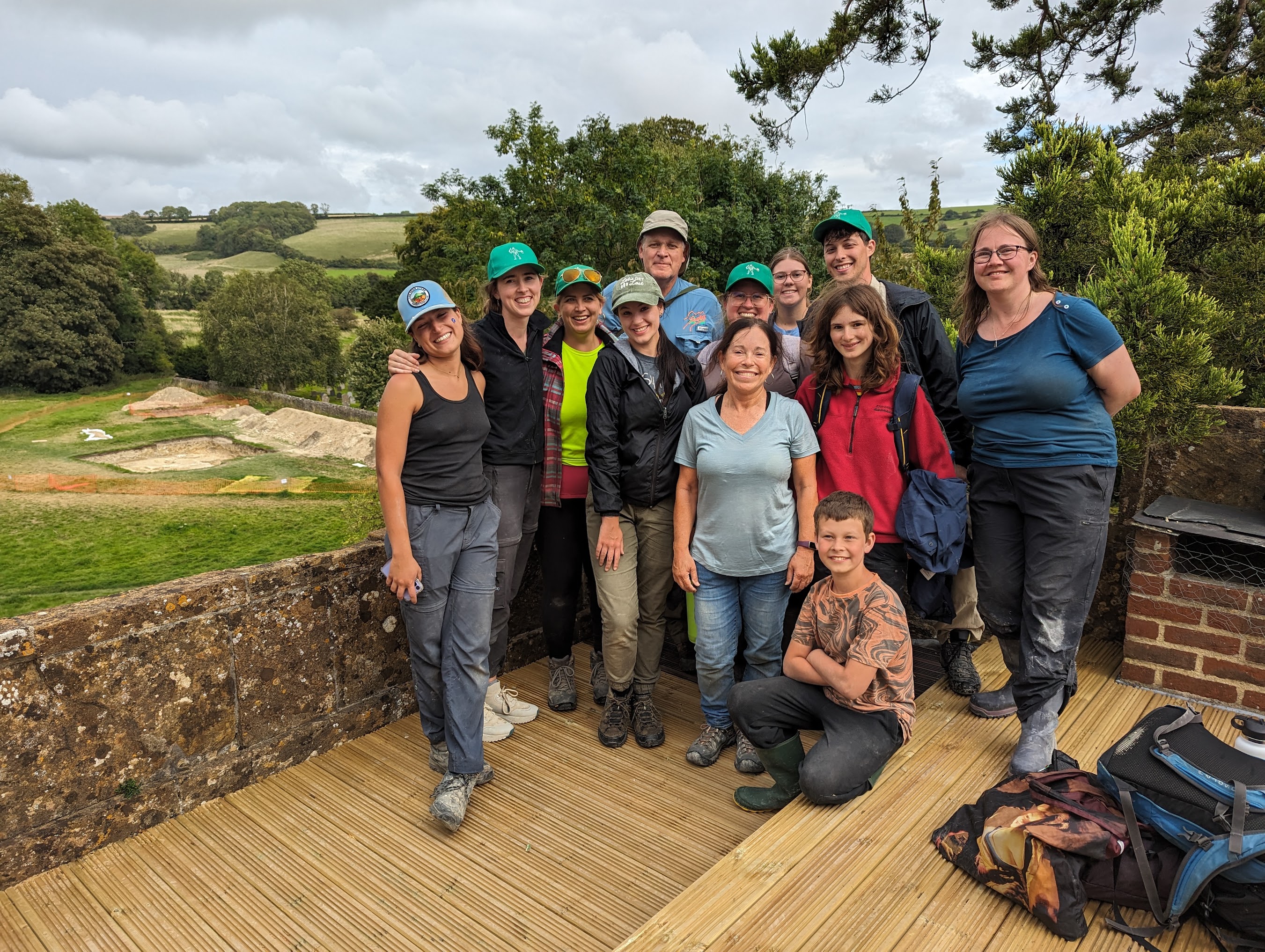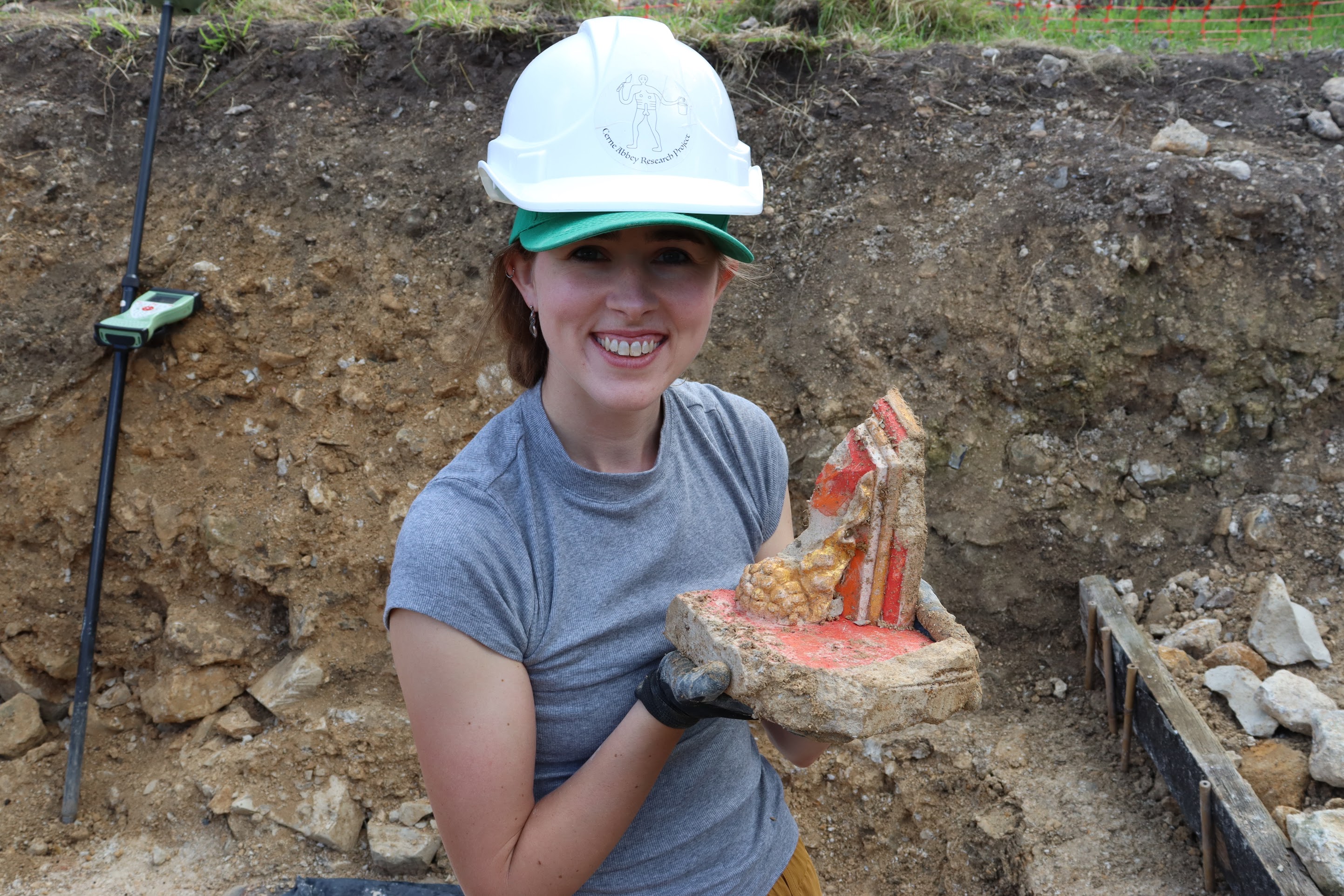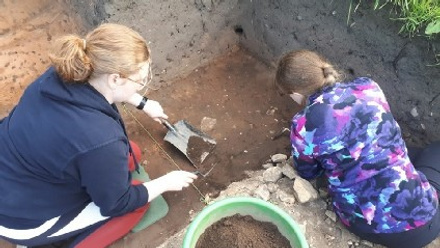Cerne Abbey Research Project
The abbey sits at the feet of the famous chalk-cut figure of a club-wielding giant that dominates the village of Cerne Abbas. Recent dating of the figure by the National Trust has shown that the giant was an Anglo-Saxon creation, and it seems directly connected to the earliest monks residing there. Ground Penetrating Radar (GPR) survey undertaken by the University of Sheffield last year provided the first ever evidence for the medieval abbey, and potentially its Anglo-Saxon predecessor beneath. Not only did it reveal an amazingly clear plan of the cloistral ranges, the survey showed that the buildings remained surprisingly intact with walls up to four feet tall in places.

Excavations in 2023 started to investigate these results, with a trenches located over the southwest corner of the cloister, which includes part of the west range and the north aisle of the monastic church. Although heavily robbed, our work revealed evidence for decorative tiled floors and even an intact burial in the cloister walkway. It seems that the cloister was extensively rebuilt in the 13th century and elaborately decorated with Purbeck marble detailing. We found a number of fragments of highly decorative carved stone that still retained evidence of original paintwork in red, white and orange) as well as surface gilding. These almost certainly came from a very important structure within the abbey church, possibly a tomb or even a shrine.
Volunteers are welcome to join the excavation team in summer 2024. Four 6-day sessions are being offered and each session costs £290. This fee includes supervision, instruction, camping and subsistence whilst on site and days off (see below).
Participants will be involved and trained in all aspects of the fieldwork, including;
• excavation using hand tools (trowel, mattock, shovel)
• single context recording
• drawing of sections and plans (both by hand and GPS)
• 3D artefact recording with GPS
• artefact processing
• ground penetrating radar survey
• community engagement exercises

We will also be undertaking further topographic survey (with a UAV) and GIS mapping, and whilst these activities by their nature do not allow mass participation, students with a particular interest in these areas will be able to observe and learn from the project team.
Accommodation (included in the fee) takes the form of camping in the grounds of the 18th-century village vicarage, just 10 minutes’ walk from the excavation site. Tents and air beds are provided. Volunteers will have access to basic campsite facilities (shower and toilets, cooking area and communal mess tents). All meals are also included in the fee and the medieval village of Cerne Abbas has a well-stocked local shop, three historic pubs, a tearoom and a micro-brewery. The cost, as well as being inclusive of camping accommodation, also includes transport to and from the nearest train station at Dorchester (South) which is served by regular and direct trains from London Waterloo.

